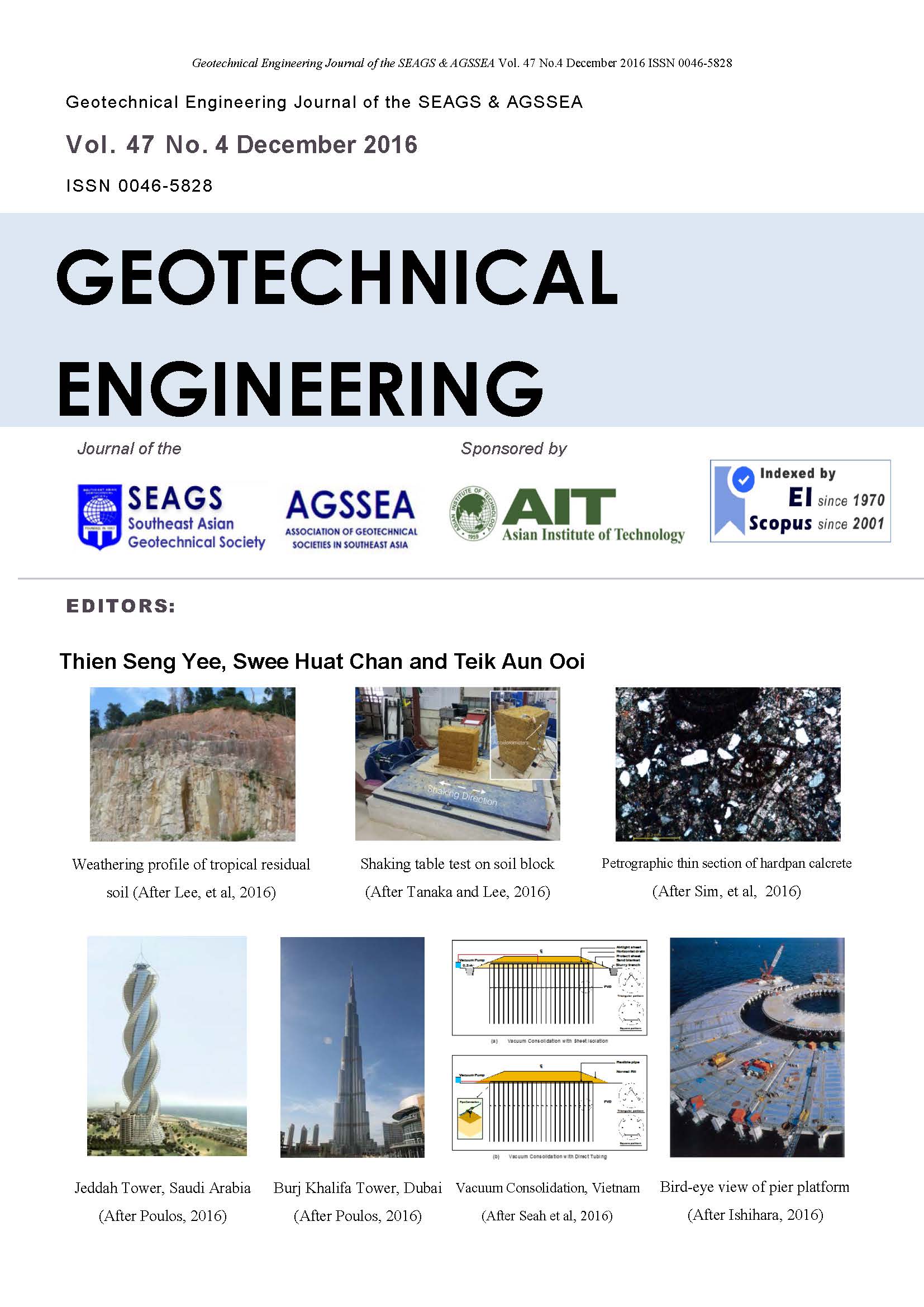An Overview of Slope Failure during Monsoon Seasons in Malaysia
Main Article Content
Abstract
Landslide constitutes one of the major geohazards in Malaysia. The frequent landslide occurrences are mainly attributed to rainfall (extrinsic factor) and tropical residual soil (intrinsic factor). This paper provides insights into the mechanisms of rainfall-induced landslides in the country and reviews efforts that have been taken to mitigate the hazard. Despite of the fact that local authorities, government agencies and practitioners have played their enormous roles in producing a better hillside development planning and control in the country, there are still areas for future improvement. The basic understanding of the unsaturated soil mechanics among practitioners and the laboratory facilities to support the theories still need to be enhanced. Besides that, the country can move towards a better landslide risk control and management by advancing the studies in run-out behaviours of landslide, establishing database for soil profiles particularly in landslide prone areas, and switching to risk-informed approach of slope stability assessment.
Article Details

This work is licensed under a Creative Commons Attribution-NonCommercial-NoDerivatives 4.0 International License.
Copyright © 2019 Association of Geotechnical Societies in Southeast Asia (AGSSEA) - Southeast Asian Geotechnical Society (SEAGS).


